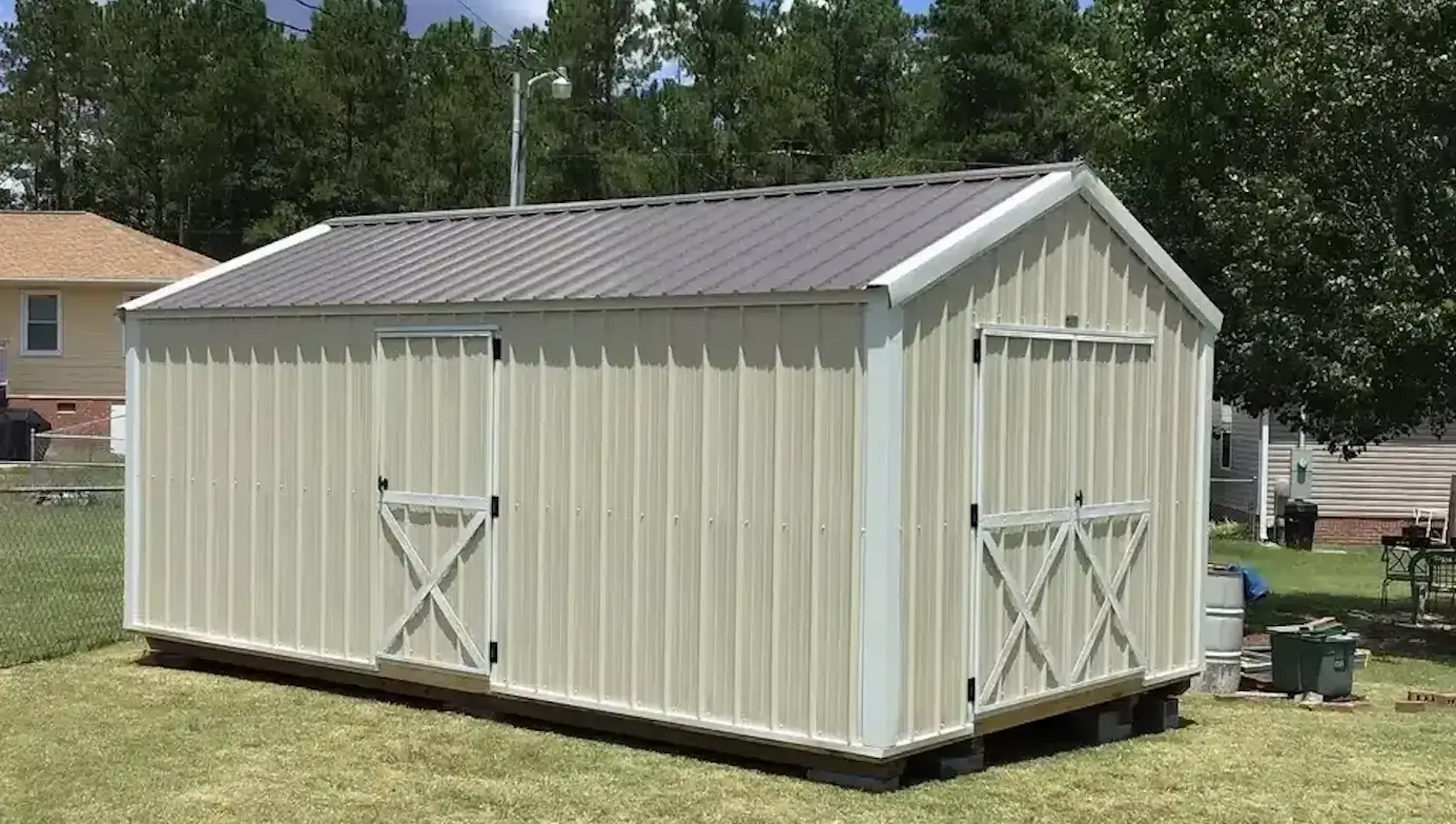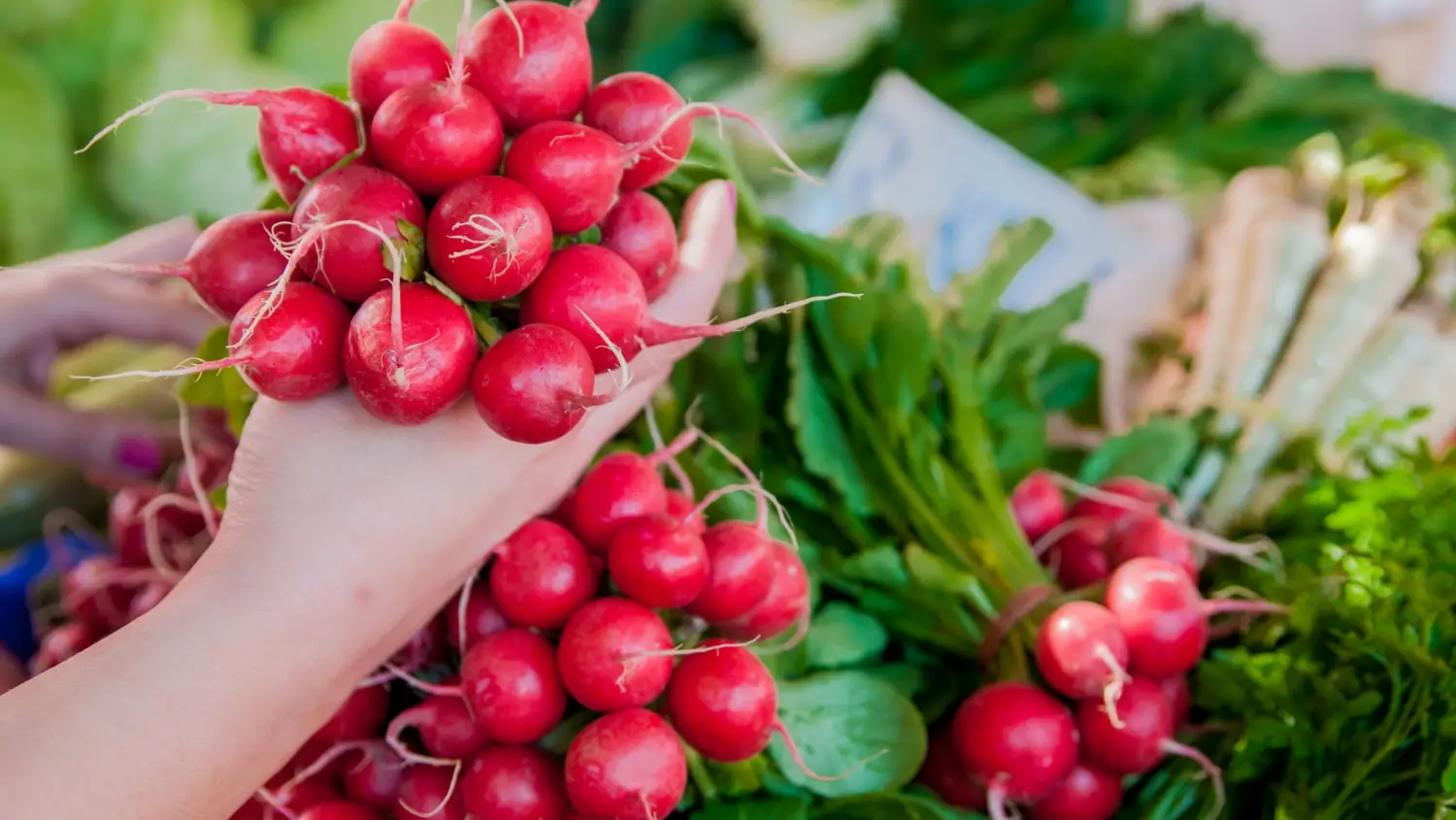
August 24, 2025

Choosing the right vegetable to grow can be tricky for gardeners. Many vegetables require special planting, care, and harvesting methods. However, radishes are easy to grow, require little care, and taste great, making them a perfect choice for gardeners.
Radishes are cool-season vegetables with a round or carrot-like shape. They come in various colors, including green, white, red, pink, purple, and yellow. Radishes grow best in cool weather, as heat can make them tough, too spicy, or cause them to flower too soon. A small amount of seeds is enough to grow radishes, making them ideal for busy gardeners.
These plants don’t take up much space, so they are great for filling small gaps in the garden. Growcycle provides helpful tips for planting and harvesting homegrown vegetables for healthy growth.
Radishes, scientifically known as Raphanus sativus, are annual root vegetables in the Brassicaceae family, which also includes broccoli, cauliflower, kale, and horseradish.
Radishes are fast growing root vegetables with a crisp texture and peppery flavor. They are popular additions to salads and other dishes.
Radishes have a unique sweet, spicy, and crisp flavor. They are sweet and crunchy when picked at the right time but become bitter and tough if left too long.
The spicy, peppery taste of radishes comes from natural compounds called glucosinolates, which are also responsible for their strong, slightly fruity aroma. These unique traits make radishes a flavorful addition to many dishes.
The radish plant generally has a crunchy, firm texture with a sharp, refreshing zing. However, the texture of the radish plant depends on the variety. For example, pink radishes are juicy and tender, perfect for eating raw in salads.
When radish plants are grown at home, they offer multiple benefits, such as;
Radishes are one of the easiest and quickest vegetables to grow. Follow these simple steps to grow fresh radishes at home:
For the successful growth of radishes, gardeners need to choose the right variety for perfect indoor growth. Here are some common types to grow:
| Name | Flavor | Growth Period | Features |
|---|---|---|---|
| Daikon Radish | Mild, sweet with some spice | 50 to 60 days | Crispy texture, best to grow in heavy soil. |
| Winter Radish | Mild, peppery, and sweet | 8 to 10 weeks | Fine texture and pairs well with hummus, dips, sharp and creamy cheeses. |
| Cherry Belle Radish | Mild and sweet | 20 to 35 days | Small rounded roots with a classic peppery taste. |
| Watermelon Radish | Slightly sweet and peppery | 60 to 65 days | A white and light green exterior and hot pink centers with a sweet taste. |
| Easter Egg Radish | Peppery | 20 to 30 days | Crispy texture with earthy and sweet undertones. |
| Edible-podded Radish | Similar to radish, fresh and slightly peppery | 22 to 60 days | Bean-like shape with crisp, succulent texture. |
Sow radish seeds in early spring from April to May for spring production. However, if fall production is needed, sow it again in late summer from August to September.
It ensures the plants have enough space to grow properly and produce good-sized roots. Here is how to do it,
Transplant young seedlings to avoid damaging their taproots. It is an easy process and can be done quickly:
The radish plant does not require much fertilizer if the soil already has nutrients. However, if the soil needs improvement, gardeners can mix compost into it before planting. They can also accelerate foliage growth with nitrogen-rich fertilizers or use ] once a month.
Radishes are low-maintenance and grow quickly, but proper care is essential to ensure healthy plants and a flavorful harvest. Follow this care guide for the best results:
Radishes need at least six hours of direct sunlight every day. Gardeners need to place this plant away from the shade, as it will help the plant grow leaves faster than healthy roots.
Radishes grow best in loose, well-drained soil with a slightly acidic to neutral pH of 6.5 to 7.0. While they thrive in loose soil, heavy clay is unsuitable as it restricts root growth.
Gardeners can add compost or well-rotted manure to improve soil quality in the fall or spring. Avoid compacted soil, as it makes it difficult for radishes to develop properly and can lead to poor growth. Ensuring the soil is light and nutrient-rich will help radishes grow healthy and flavorful.
In hot weather, the radish plant needs consistent moisture to thrive well. Hence, watering it about 1 inch per week is better, but do not overwater the plants. If the soil is too dry, the roots may not grow properly; if it is too wet, the roots can split or rot.
However, gardeners must be careful when watering seedlings, as they can dry out more quickly and require extra attention.
Radishes grow best in temperatures between 40 and 70°F. In hot weather, the high temperature can cause the plants to bolt, making the radishes tough, woody, or hollow. Once a radish bolts, the bulb stops growing.
Hence, it is best to grow the plant below 60°F. On the other hand, humidity does not have much impact as long as the soil is kept moist and there is good airflow.
Radishes need bees and other pollinators to grow. Different radish varieties can cross-pollinate, so having multiple plants is beneficial.
To keep a variety pure, gardeners must plant only one type of radish for seeds each year. If more types are growing, space them at least 1 km apart or 500 meters if there’s a natural barrier like a hedge.
Regularly removing weeds around radish plants is essential to ensure they get enough light, water, and nutrients. Weeds compete for space and resources, which can hinder the growth of radishes and prevent proper root formation.
To protect the delicate radish roots, always pull weeds by hand rather than using a hoe or tools that might cause damage. Keeping the area clear of weeds not only helps the radishes grow better but also reduces the risk of pests and diseases. A weed-free environment ensures the radishes thrive and develop healthy, flavorful roots.
Radishes are usually ready for harvest 3 to 4 weeks after planting, depending on the variety. Smaller varieties, like Cherry Belle, mature faster, while larger types, such as Daikon, may take longer. Gardeners should check the seed packet for specific growing times to avoid leaving them in the ground too long.
Radishes are usually easy to grow, but they can have some common issues. Follow this guide to identify and fix radish problems:
Reason: Inconsistent watering, overcrowding, extreme temperature changes, or early planting.
Solution:
Reason: Inconsistent watering, excessive fertilizer, or overcrowding.
Solution:
Reason: Poor soil quality, like unrotted organic matter and compacted texture.
Solution:
Reason: Overwatering, lack of nutrients such as nitrogen, or temperature changes.
Solution:
Can radishes grow in the shade?
Although radishes prefer full sun, they can tolerate partial shade. However, too much shade can lead to excessive leaf growth and underdeveloped roots. It is best to place radishes at least six hours of direct sunlight daily for optimal growth.
Can I grow radishes in containers?
Yes, radishes grow well in containers. However, the container must be deep enough, between 6 inches and 12 inches wide, for the roots to grow and have good drainage.
Are radish leaves edible?
Yes, radish leaves are edible and can be used raw in salads or cooked in soups and stir-fries. The best thing about cooking these leaves is to help remove the fuzzy texture of some varieties.
Radishes are a great choice for indoor gardening. They produce dark green leaves and small, cross-shaped flowers. Known for their round or oval shape with swollen taproots, radishes are fully edible, making them a rewarding plant to grow. The plant also has small pods and a unique root structure.
To grow radishes successfully, it is crucial to provide the right conditions. For healthier indoor vegetable gardens, Growcycle offers helpful gardening and harvesting tips to guide gardeners every step of the way.
Disclaimer: This material is for informational purposes only and should not be relied on for legal, medical, financial, or any other form of professional advice.